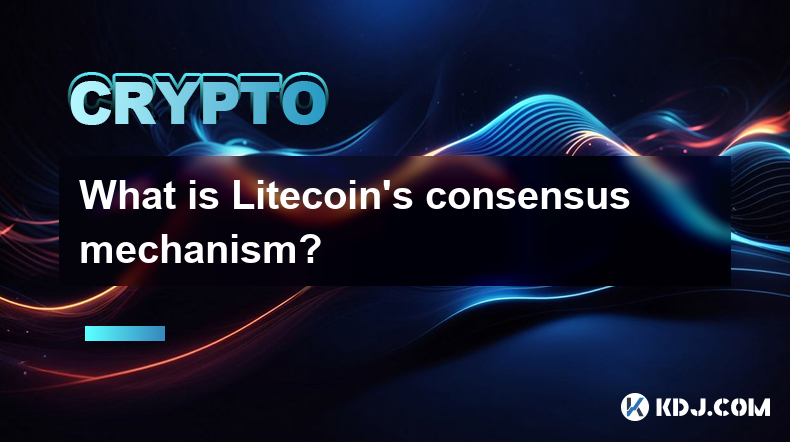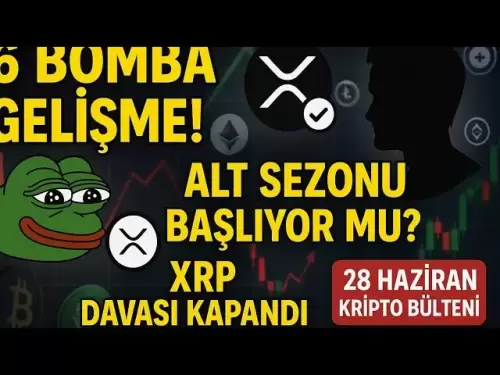-
 Bitcoin
Bitcoin $107,341.7259
0.15% -
 Ethereum
Ethereum $2,438.6204
0.70% -
 Tether USDt
Tether USDt $1.0003
-0.02% -
 XRP
XRP $2.1866
1.94% -
 BNB
BNB $649.0952
0.36% -
 Solana
Solana $150.9602
5.63% -
 USDC
USDC $0.9999
0.00% -
 TRON
TRON $0.2742
0.40% -
 Dogecoin
Dogecoin $0.1645
1.93% -
 Cardano
Cardano $0.5669
1.18% -
 Hyperliquid
Hyperliquid $37.8286
4.19% -
 Bitcoin Cash
Bitcoin Cash $491.4669
-2.74% -
 Sui
Sui $2.8150
3.06% -
 Chainlink
Chainlink $13.4184
2.91% -
 UNUS SED LEO
UNUS SED LEO $9.0809
0.27% -
 Avalanche
Avalanche $18.0295
2.60% -
 Stellar
Stellar $0.2396
1.19% -
 Toncoin
Toncoin $2.8587
0.13% -
 Shiba Inu
Shiba Inu $0.0...01160
2.59% -
 Litecoin
Litecoin $86.4192
1.45% -
 Hedera
Hedera $0.1486
1.19% -
 Monero
Monero $308.4324
0.87% -
 Polkadot
Polkadot $3.4202
1.43% -
 Bitget Token
Bitget Token $4.6436
-0.34% -
 Dai
Dai $0.9998
-0.02% -
 Ethena USDe
Ethena USDe $1.0002
0.00% -
 Uniswap
Uniswap $7.1527
3.29% -
 Pi
Pi $0.5357
-8.45% -
 Pepe
Pepe $0.0...09588
4.61% -
 Aave
Aave $259.9759
0.81%
What is Litecoin's consensus mechanism?
Litecoin uses a Proof-of-Work (PoW) consensus mechanism, employing the Scrypt algorithm for faster transaction confirmations (2.5 minutes vs. Bitcoin's 10). This PoW system, though initially ASIC-resistant, secures the blockchain via competitive mining.
Mar 11, 2025 at 04:21 pm

Key Points:
- Litecoin utilizes a Proof-of-Work (PoW) consensus mechanism, similar to Bitcoin.
- Its PoW algorithm, Scrypt, differs from Bitcoin's SHA-256, offering potential advantages in terms of ASIC resistance (though this has diminished over time).
- The network's security relies on miners competing to solve complex cryptographic puzzles.
- Block times are significantly faster than Bitcoin's, leading to quicker transaction confirmations.
- The consensus mechanism ensures the integrity and security of the Litecoin blockchain.
What is Litecoin's Consensus Mechanism?
Litecoin, a peer-to-peer cryptocurrency, employs a Proof-of-Work (PoW) consensus mechanism to validate transactions and add new blocks to its blockchain. This mechanism is central to Litecoin's operation, ensuring the security and integrity of its network. Understanding how this works is crucial for grasping Litecoin's functionality.
Proof-of-Work (PoW) Explained:
In the context of Litecoin, PoW involves a competitive process where miners use powerful computers to solve complex mathematical problems. The first miner to solve the problem gets to add the next block of transactions to the blockchain and is rewarded with newly minted Litecoin. This reward incentivizes miners to participate and secure the network.
Scrypt: Litecoin's Unique Algorithm:
Unlike Bitcoin, which uses the SHA-256 hashing algorithm, Litecoin utilizes Scrypt. Scrypt was initially designed with the goal of being more resistant to specialized hardware (ASICs) compared to SHA-256. This aimed to create a more decentralized mining landscape, allowing individuals with less powerful hardware a greater chance to participate. While Scrypt initially offered this advantage, the development of ASICs for Scrypt has lessened this difference over time.
How the Consensus Mechanism Works in Practice:
The process of reaching consensus in Litecoin can be broken down into these steps:
- Transaction Broadcasting: Users broadcast their transactions to the network.
- Transaction Verification: Miners receive and verify the transactions, checking for things like double-spending and valid signatures.
- Block Creation: Miners bundle verified transactions into a block.
- Proof-of-Work Calculation: Miners compete to solve a computationally intensive cryptographic puzzle using the Scrypt algorithm.
- Block Addition: The miner who first solves the puzzle adds the block to the blockchain.
- Blockchain Propagation: The new block is propagated across the network, updating all participants' copies of the blockchain.
The Role of Miners in Maintaining Consensus:
Miners are the backbone of Litecoin's PoW consensus mechanism. Their computational power secures the network by making it extremely difficult for malicious actors to alter the blockchain history. A successful attack would require controlling more than 51% of the network's hashing power, a computationally expensive and practically infeasible task given the distributed nature of Litecoin mining.
Block Time and Transaction Confirmation:
Litecoin boasts a significantly faster block time than Bitcoin. While Bitcoin targets a 10-minute block time, Litecoin aims for approximately 2.5 minutes. This faster block time translates to quicker transaction confirmations, making Litecoin potentially more suitable for certain applications requiring faster payment processing.
Security Implications of Litecoin's Consensus Mechanism:
The security of the Litecoin network is directly tied to its PoW consensus mechanism. The more hashing power dedicated to securing the network, the more resistant it becomes to attacks. The decentralized nature of mining further enhances security, making it harder for any single entity to gain control. The ongoing development and evolution of the Scrypt algorithm also play a role in maintaining the long-term security of the Litecoin blockchain.
Energy Consumption and Environmental Concerns:
Like Bitcoin, Litecoin's PoW mechanism requires significant computational power, leading to energy consumption. This has raised environmental concerns, similar to those surrounding Bitcoin mining. Discussions about energy efficiency and the environmental impact of PoW consensus mechanisms are ongoing within the cryptocurrency community.
Frequently Asked Questions:
Q: Is Litecoin's PoW mechanism vulnerable to 51% attacks?
A: While theoretically vulnerable, a 51% attack on Litecoin is extremely difficult and expensive due to the distributed nature of mining and the considerable hashing power required.
Q: How does Scrypt differ from SHA-256 in terms of security?
A: Both are cryptographically secure, but Scrypt was initially designed to be more resistant to ASICs, though this advantage has lessened over time due to ASIC development.
Q: What are the advantages of Litecoin's faster block time?
A: Faster block times lead to quicker transaction confirmations, making Litecoin potentially more suitable for applications requiring faster payment processing.
Q: Is Litecoin mining profitable?
A: The profitability of Litecoin mining depends on several factors, including the price of Litecoin, the cost of electricity, and the efficiency of mining hardware. It's crucial to perform a thorough cost-benefit analysis before engaging in Litecoin mining.
Q: What happens if a miner attempts to add fraudulent transactions to a block?
A: The network would reject the block because other miners would not validate the fraudulent transactions. The honest miners' version of the blockchain would prevail.
Disclaimer:info@kdj.com
The information provided is not trading advice. kdj.com does not assume any responsibility for any investments made based on the information provided in this article. Cryptocurrencies are highly volatile and it is highly recommended that you invest with caution after thorough research!
If you believe that the content used on this website infringes your copyright, please contact us immediately (info@kdj.com) and we will delete it promptly.
- Kitten Craze Online: Hunting for the Purr-fect Coin Purse
- 2025-06-29 10:30:12
- Pudgy Penguins Soar to 3-Month High Amidst PENGU ETF Buzz!
- 2025-06-29 10:30:12
- AI Agents, Token Role, and Capitalization: Navigating the Web3 Frontier
- 2025-06-29 10:50:11
- Avalanche Price Forecast: Grayscale Boost Signals Potential Rally to $50?
- 2025-06-29 10:50:11
- Khazan's Getting a Facelift: Balance Changes and Freebies Galore!
- 2025-06-29 11:10:12
- Wall Street's Crypto Rival Battle: Saylor vs. Chanos and the Meme Coin Mania
- 2025-06-29 11:10:12
Related knowledge

How to customize USDT TRC20 mining fees? Flexible adjustment tutorial
Jun 13,2025 at 01:42am
Understanding USDT TRC20 Mining FeesMining fees on the TRON (TRC20) network are essential for processing transactions. Unlike Bitcoin or Ethereum, where miners directly validate transactions, TRON uses a delegated proof-of-stake (DPoS) mechanism. However, users still need to pay bandwidth and energy fees, which are collectively referred to as 'mining fe...

USDT TRC20 transaction is stuck? Solution summary
Jun 14,2025 at 11:15pm
Understanding USDT TRC20 TransactionsWhen users mention that a USDT TRC20 transaction is stuck, they typically refer to a situation where the transfer of Tether (USDT) on the TRON blockchain has not been confirmed for an extended period. This issue may arise due to various reasons such as network congestion, insufficient transaction fees, or wallet-rela...

How to cancel USDT TRC20 unconfirmed transactions? Operation guide
Jun 13,2025 at 11:01pm
Understanding USDT TRC20 Unconfirmed TransactionsWhen dealing with USDT TRC20 transactions, it’s crucial to understand what an unconfirmed transaction means. An unconfirmed transaction is one that has been broadcasted to the blockchain network but hasn’t yet been included in a block. This typically occurs due to low transaction fees or network congestio...

How to check USDT TRC20 balance? Introduction to multiple query methods
Jun 21,2025 at 02:42am
Understanding USDT TRC20 and Its ImportanceUSDT (Tether) is one of the most widely used stablecoins in the cryptocurrency market. It exists on multiple blockchain networks, including TRC20, which operates on the Tron (TRX) network. Checking your USDT TRC20 balance accurately is crucial for users who hold or transact with this asset. Whether you're sendi...

What to do if USDT TRC20 transfers are congested? Speed up trading skills
Jun 13,2025 at 09:56am
Understanding USDT TRC20 Transfer CongestionWhen transferring USDT TRC20, users may occasionally experience delays or congestion. This typically occurs due to network overload on the TRON blockchain, which hosts the TRC20 version of Tether. Unlike the ERC20 variant (which runs on Ethereum), TRC20 transactions are generally faster and cheaper, but during...

The relationship between USDT TRC20 and TRON chain: technical background analysis
Jun 12,2025 at 01:28pm
What is USDT TRC20?USDT TRC20 refers to the Tether (USDT) token issued on the TRON blockchain using the TRC-20 standard. Unlike the more commonly known ERC-20 version of USDT (which runs on Ethereum), the TRC-20 variant leverages the TRON network's infrastructure for faster and cheaper transactions. The emergence of this version came as part of Tether’s...

How to customize USDT TRC20 mining fees? Flexible adjustment tutorial
Jun 13,2025 at 01:42am
Understanding USDT TRC20 Mining FeesMining fees on the TRON (TRC20) network are essential for processing transactions. Unlike Bitcoin or Ethereum, where miners directly validate transactions, TRON uses a delegated proof-of-stake (DPoS) mechanism. However, users still need to pay bandwidth and energy fees, which are collectively referred to as 'mining fe...

USDT TRC20 transaction is stuck? Solution summary
Jun 14,2025 at 11:15pm
Understanding USDT TRC20 TransactionsWhen users mention that a USDT TRC20 transaction is stuck, they typically refer to a situation where the transfer of Tether (USDT) on the TRON blockchain has not been confirmed for an extended period. This issue may arise due to various reasons such as network congestion, insufficient transaction fees, or wallet-rela...

How to cancel USDT TRC20 unconfirmed transactions? Operation guide
Jun 13,2025 at 11:01pm
Understanding USDT TRC20 Unconfirmed TransactionsWhen dealing with USDT TRC20 transactions, it’s crucial to understand what an unconfirmed transaction means. An unconfirmed transaction is one that has been broadcasted to the blockchain network but hasn’t yet been included in a block. This typically occurs due to low transaction fees or network congestio...

How to check USDT TRC20 balance? Introduction to multiple query methods
Jun 21,2025 at 02:42am
Understanding USDT TRC20 and Its ImportanceUSDT (Tether) is one of the most widely used stablecoins in the cryptocurrency market. It exists on multiple blockchain networks, including TRC20, which operates on the Tron (TRX) network. Checking your USDT TRC20 balance accurately is crucial for users who hold or transact with this asset. Whether you're sendi...

What to do if USDT TRC20 transfers are congested? Speed up trading skills
Jun 13,2025 at 09:56am
Understanding USDT TRC20 Transfer CongestionWhen transferring USDT TRC20, users may occasionally experience delays or congestion. This typically occurs due to network overload on the TRON blockchain, which hosts the TRC20 version of Tether. Unlike the ERC20 variant (which runs on Ethereum), TRC20 transactions are generally faster and cheaper, but during...

The relationship between USDT TRC20 and TRON chain: technical background analysis
Jun 12,2025 at 01:28pm
What is USDT TRC20?USDT TRC20 refers to the Tether (USDT) token issued on the TRON blockchain using the TRC-20 standard. Unlike the more commonly known ERC-20 version of USDT (which runs on Ethereum), the TRC-20 variant leverages the TRON network's infrastructure for faster and cheaper transactions. The emergence of this version came as part of Tether’s...
See all articles

























































































